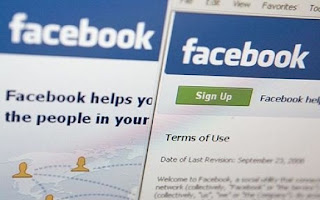
Linux is an open source operating system is a stable clone of UNIX systems, but unlike many versions of UNIX, most versions of Linux are free, Linux is designed to run on any PC because of its robustness and scalability. In 1991, Linus Torvalds, a student at the
University of Helsinki in Finland, has developed the Linux kernel. He released it on the Internet and was freely available for download. Later in 1983, the Free Software
Foundation (www.fsf.org) started to develop free software in a UNIX operating system free to create. This software was called GNU (guh-noo) utilities. This utility was link-up
with the Linux kernel in 1991.

Windows is a closed source OS developed by Microsoft. Microsoft announced the development of Windows in 1983. Also graphical user interface (GUI) for its own
operating system (DOS), which was for the IBM PC and compatible computers shipped since 1981. Windows is more modular and
extensible. It has also real-time communication and
performance, supported by all
processors. Windows is designed to be part of network
management controls, such as routers, switches, or mini-computer to manage the terminals.
|
Topic
|
Linux
|
Windows
2000
|
|
Reliability
|
Linux is known for its high reliability. Linux servers can run for years. But Disk I / O standard, non-synchronous and is less reliable for transaction-based activities, and may produce a damaged file system after a power failure or system crash. Linux is a very reliable system for the average user.
|
Windows is known for its "Blue Screen of Death". A major drawback of Windows is not reliable. Windows XP eats a lot of system resources and memory and it is very difficult to keep the system running for months. There is a big drawback of Windows memory becomes fragmented and corrupted file systems.
|
|
Performance
|
Linux performance is fine for most applications, but performance is not optimal when under heavy network load. Linux network performance is less than 20-30% of the power of FreeBSD. But what improves performance in the recent version of the Linux kernel. Introducing a new virtual memory based on FreeBSD VM system. FreeBSD and Linux are open source and the performance of both the rapidly increasing.
|
Windows is perfect for all office applications, but not for heavy duty applications and network loads. Windows performance so far good for small applications, but not good for heavy duty applications and the network. Recently Windows 7 with new technologies that increase system performance in some way. Windows is not free trade.
|
|
Security
|
Linux is open source and the source is open for anyone to inspect the security changes. Linux code is quickly adjusted by the most experienced programmers. There is no policy review and therefore Linux was susceptible to almost all Unix-CERT advisory of the year. But Linux has a large and robust packet filtering firewall called "iptables" This an administrator to remove unsafe services possible. |
Windows is not open source and charge for each permit. Windows claims that their products are protected, but they offer no guarantee. Windows source code is open and it is very difficult to correct errors or security holes fixed. Windows is much influenced by the number of known security holes and companies have lost millions of dollars. |
|
Filesystem
|
Linux comes with ext2 and ext3 filesystem, ext3 has journaling which secures and fixes filesystem erros at the system start-up. Linux filesystems are designed for today's applications and network support. |
Windows FAT and NTFS filesystem are both plagued
by over 20 years of backwards compatibility. Windows not yet designed with a
multi-user OS or Network, the filesystem of windows not able to handle
today's applications.
|
|
Device Drivers
|
Linux community is very difficult for hardware manufacturers to release binary-only drivers. The intention is to encourage manufacturers to develop device drivers open source. Unfortunately, most sellers are not willing to source their drivers release and it is very difficult for users to the drivers to
all suppliers to use.
|
Microsoft has excellent relationships with hardware vendors. There are often conflicts with the use of drivers on the various versions of Microsoft Windows, but generally Windows users have access to an excellent third driver's third. There are tons of third-party drivers are available for Windows.
|
|
Free Applications
|
Linux applications are almost free and open source
can be available under GNU Linux. GNU software runs on both Linux and FreeBSD
without
modification. |
Windows applications are not free and paid ones.
There are fewer amounts of free applications available as compare to Linux.
|
|
Development Environment
|
Linux comes with GNU C, C++ compilers,
interpreters and Editors and GDB
debugger. |
Windows include very few development tools and
most of need to be purchased separately and most of rarely compatible with
each other.
|
|
Support
|
All Linux vendors offer some level support and
other offer full 24X7 support. There are many website, blogs and forums offer
free tutorials on Linux. Linux updates are available periodically.
|
There is no free support for Windows. Windows
updates are not available frequently and you have to wait for years. There
are very less support available for windows users on the internet.
|
|
Price and Total Cost
|
Linux is free. There is no licensing restrictions
on Linux and can be installed on as many systems as you like without any
cost.
|
Windows is not free. The server edition of Windows
XP costs
nearly $700. Windows allow one copy for license. |


